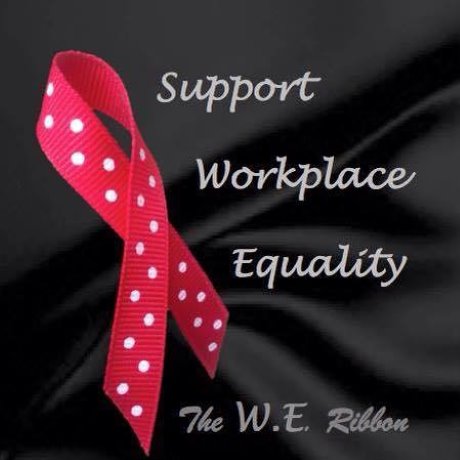Jamie McMillan and Pat Williams say there is an iconic symbol behind the red and white polka dot ribbon used in the Workplace Equality (W.E.) Awareness campaign: Rosie the Riveter.
The "We Can Do It" poster used during the Second World War featured Rosie, who represented women in factories filling in for the men who were at war. In it, she dons a red and white polka dot bandana.
"It just clicked in. It (the symbol of Rosie) was just perfect and it’s so simple," says McMillan, an ironworker and welder with Local 736 in Hamilton, Ont.
The crux of this campaign, she says, is to raise awareness about the ongoing struggle to recruit and retain women in the trades in part because of the lack of affordable childcare options and flexible hours.
"Personally, as a construction careers advocate through school and community outreach I am often asked by young girls and women about the impact a career in construction can have on them once they become mothers," explains McMillan, who also formed the initiative Journeyman to speak about careers in construction trades.
"The truth is it’s really difficult. Childcare is the number one reason recruitment and retention in construction is so difficult for those who want to be parents actively involved in their children’s lives."
She and co-founder Williams, who worked as an operating engineer before retiring, state the W.E. ribbon is a symbol of hope, and will hopefully evoke change in both Canada and the U.S.
"As tradeswomen we have often seen the challenges parents have regarding childcare needs. This is especially true for single parents," the women state in an email to Daily Commercial News.
"Contract construction is very different than a 9 a.m.- 5 p.m. work schedule. It is very erratic and demanding. Without around the clock affordable childcare many can’t even apply for opportunities to improve their lives, therefore we can’t expect to successfully maximize recruitment and retention in the workforce."
The W.E. Ribbon officially launched on social media in March. The founders hope to lobby government and various organizations as well as come up with an action plan, funding and support to implement change.
"Right now the ribbon is about awareness. We are exploring, gathering information and starting conversations about the possibilities surrounding the ribbon and its potential," they write.
"The plan is to use it to maximize recruitment and retention in the workplace through fundraising and awareness campaigns. One of our biggest hopes is to build relationships with like-minded organizations, industry and government to provide additional services and facilities that cater to those with irregular work schedules and child care needs."
The women state proceeds from the cause could potentially be used to provide funding for facilities to hire employees for afterhours care and subsidies for "those who can’t afford the childcare costs due to low salaries or limited work hours."
"We need to start a movement," adds McMillan.
"Something needs to be done about it. It shouldn’t be just a conversation anymore, it should be action. This isn’t just about women. It’s a global issue."
McMillan says she is seeing success with Journeyman, with more women encouraged by her story and she hopes this campaign will also gain traction.
"Years ago I would have never pictured myself being in this position doing what I’m doing now," she says.
McMillan found the construction trades in her late twenties and founded Journeyman a few years ago. She has numerous speaking engagements and is seeing the positive impact firsthand.
"I was working with a girl in a maximum security detention centre," she recalls as an example, adding she’s since been asked to continue working with at-risk youth.
"I had to go be a speaker for six girls and the hardest one to reach was the one that ended up being the easiest to talk to in the end because she was so excited about the idea of construction careers. Things like that are what I get excited about. Even if you can help one person and as long as I’m reaching somebody."












Recent Comments
comments for this post are closed